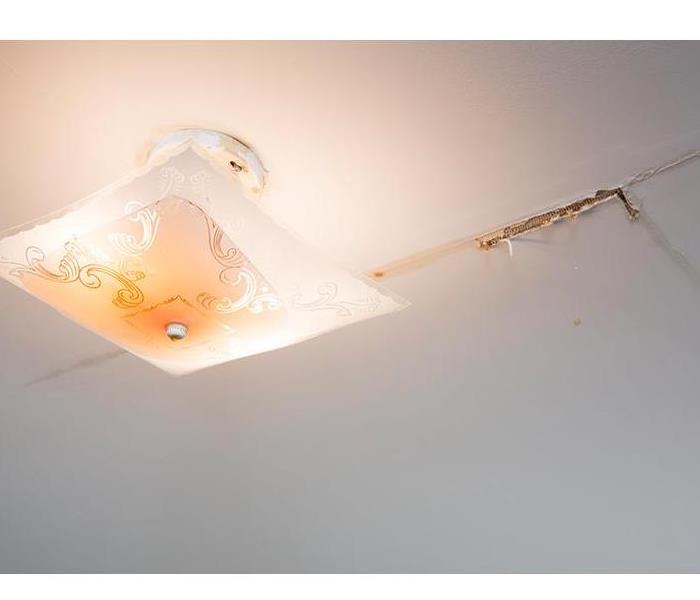Recent Posts
Teaching Your Family How to Escape a Home Fire
7/8/2022 (Permalink)
 It’s safer to crawl out during a building fire instead of standing upright.
It’s safer to crawl out during a building fire instead of standing upright.
Each year there are thousands of home fires; therefore, it’s wise to teach your family some fire safety tips. Your family's safety can be increased by teaching them the following ways to escape a home fire.
- Fire Crawl
Smoke and heat rise, so it’s best to crawl out during a fire instead of standing upright. Teach your family two fire crawl methods: the dog and snake. The dog crawl involves getting down on your forearms and knees and placing your nose on the ground like a dog sniffing. The snake crawl is best if it’s too hot to have your bottom in the air. - Bed Roll
Your family’s safety is your primary concern. Another method you should teach them is the bed roll. As the heat rises, the temperature of the area close to the ceiling can be more than a hundred degrees hotter than the space below. Instruct your family to turn to their side, reach their hand to the floor and gently roll off their bed without sitting up. - Door Check
Closed doors help stop a fire from spreading faster. However, when a door is opened during a fire, it can ignite a burst of firefrom the fresh supply of oxygen. Coach your family to feel the closed door with the back of their hand first. If it’s cool or only slightly warm, they can slowly open the door leading with their shoulder. If it’s hot, they should choose another way to escape. - Other Tips
Once your family understand the basic fireescape methods, it’s a good idea to discuss special circumstances. If they get trapped inside a room, teach them to go to a window to escape. If the room is not on the first floor, instruct them to yell for help and wave something so the firefighters know where they are. It’s also important to emphasize that once they get outside to stay outside.
Your family’s safety during a fire can be increased by teaching them how to escape. While you hope that your home never catches on fire, SERVPRO of Greeley/Windsor can assist you. Call us at 970-353-1388. We answer our phones 24/7/365 which puts our technicians onsite faster.
Three Ways to Avoid Water Damage When You're Not Home
7/8/2022 (Permalink)
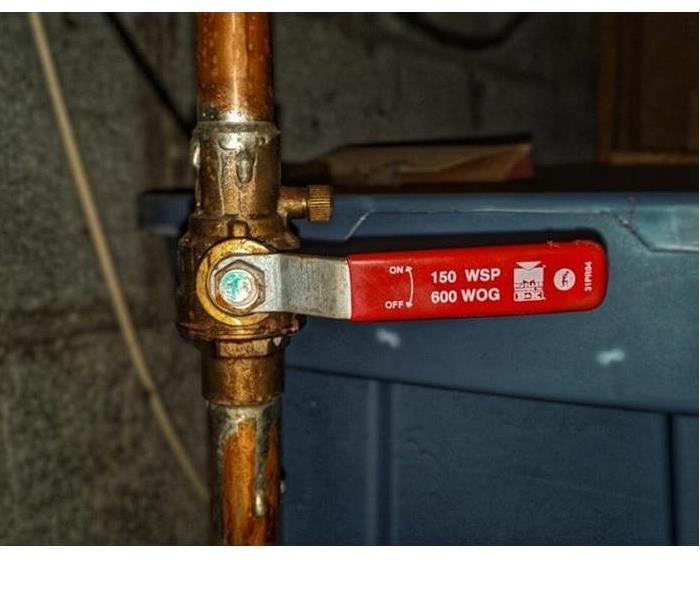 When leaving for vacation or just a few days away, shut the water off to your home.
When leaving for vacation or just a few days away, shut the water off to your home.
No matter what time of year it is if you’re going to be away from your home for an extended amount of time – even just over night – it’s a smart idea to turn off your water until you return home. Why? Because it doesn’t take very much water to cause a whole lot of damage! If your pipes freeze and burst while you’re gone, or if a washer hose ruptures or a supply line leaks, major water damage can occur! There are a few things you can do before heading out of town to give you peace of mind when it comes to the state of your home’s water.
Shut off the Main Water Valve
Your safest bet is to turn off the main water valve. Make sure the adults in your home know where the main shutoff valve is and know how to turn it on and off. (Knowing this will also come in handy if you’re at home during an emergency, so the water can quickly be shut off!) Locate the main water valve near your water meter usually located in the basement, near the front of the house, attached to the outside of the home’s exterior, or in an underground box in the yard.
There are two types of main shutoff valves. You’ll probably find what’s called a “gate valve” if you’re in an older home. Turn the rounded handles a certain number of times to open or close the valve. The “ball valve” is more common today. Turn the lever-like handle 90 degrees to turn the water on or off. If this valve crosses the pipes, it’s closed; if it’s parallel to them, it’s open.
Test shutting off the valve ahead of time by locating the main shutoff valve, turning it off, and running a faucet. If no water comes out, you’ve successfully turned off your home’s water supply!
Turn off Individual Water Valves
But what if you’re leaving during the summer and you can’t turn off your entire water supply because you have automatic sprinklers? If this is the case, you can simply turn off individual water valves to the water sources with the highest damage risk. These sources include the dishwasher, washing machine, and ice maker. Individual shutoff valves tend to be located directly on the supply lines leading to most appliances, including toilets and faucets. Usually, this will be a small, rounded handle that you’ll turn clockwise. Doing this will turn off the water to that source. (Take note that the ice-maker shutoff valve may be under the sink or in the basement!)
If you’ll be shutting off individual water supplies, it’s a good idea to kill two birds with one stone and check your supply lines themselves. They can become weak over time, resulting in leaks, cracks, or bulging. If you notice these or other forms of corrosion, you may want to repair or replace them before leaving.
Turn off Water Supply to Outdoor Faucets
If you’re leaving during the colder seasons, it’s a good idea to also shut off the water to your outdoor faucets as well. Their shutoff valve will most likely be located inside your house. Shut it off before you head out the door. Once you’ve shut off the valve, turn on the exterior faucet to drain any excess water. And remember to detach the hoses, too!
If you follow these simple steps, you can rest easy knowing your home won’t be at risk of water damage while you’re away!
How To Prevent a Lint Fire in Your Dryer
7/8/2022 (Permalink)
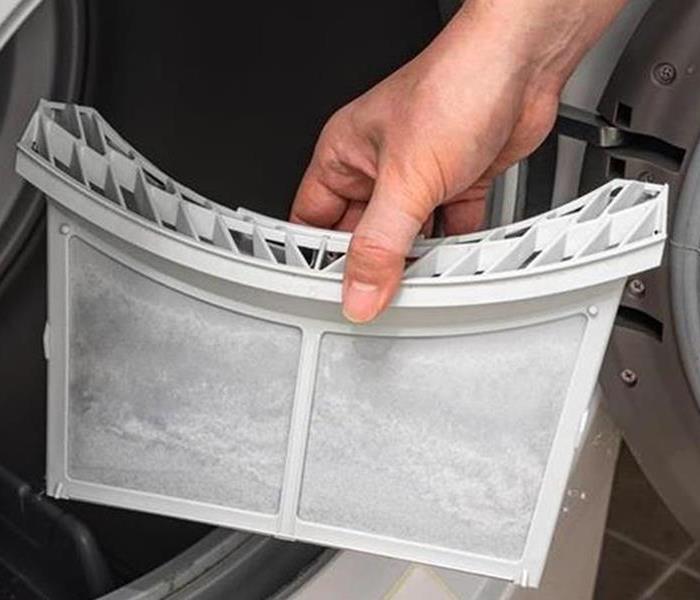 Avoid Fire Damage and Prevent a Lint Fire in Your Dryer by Following These Tips.
Avoid Fire Damage and Prevent a Lint Fire in Your Dryer by Following These Tips.
Lint in your dryer is not just a mere annoyance. It could also cause a lint fire that destroys your house That is why you should frequently clean the lint from your dryer. Removing the lint from the dryer screen is not enough. You also should do deep cleans of the vents and the interior. To keep your dryer functioning well and free of lint, all you need is:
- All-Purpose cleaner
- Vacuum
- Water
- Microfiber cloth
Prevent Dryer Fire by Eliminating Lint After Each Load
Whenever you finish running a dryer cycle, you should check the lint screen. Depending on the model you have, the screen could be on the side of the dryer, on the bottom of the door or at the top of appliance. You should be able to completely remove the screen by pulling it from the handle. Be careful not to pull too hard. If you bend the screen, you may not be able to get it back into the dryer.
After the screen is out of the dryer, use your hands or a brush to gather a small wad of lint. Rub this wad across the screen to attract additional lint. Then simply throw the lint into the garbage.
You may also want to rinse the lint screen with water every few weeks. Simply run the screen under the kitchen sink. You could additionally utilize soap if there is excess dust on the screen.
Before you put the screen back into the dryer, use your vacuum attachment to clean any lint that has accumulated in the vent. This should further keep your home safe from lint fire.
Deep Clean the Vents and Interior for Extra Fire Safety
Since a dryer fire can start in the interior sections of the appliance, you should deep clean these areas twice a year, as well. Unplug the machine and move it away from the wall. You should notice an exhaust hose. You can remove it by loosening the clamps with a screwdriver.
Next, take the hose to a well-lit area. Use a vacuum attachment or cleaning brush to remove any lint balls you see. You can then utilize a cleaning rod to eliminate lint from the vent in the wall.
After re-attaching the exhaust hose, you should also brush or vacuum the dryer vent on the outside of your home. Be sure to put the vent securely back in place. Otherwise, rodents or other pests could enter your home.
The entire interior of your dryer should be deep cleaned biannually, as well. Start by removing the back access panel. Wipe or vacuum any exposed sections, including the area around the exhaust vent. Just be careful when touching any of the wires near the vent. If you opt to clean the metal parts of the dryer, use a microfiber cloth. Once you are done, screw the panel back into place.
The above tips should keep your dryer functioning properly and reduce your chances of a lint fire. If your dryer or another appliance ever does cause fire damage to your home, emergency restoration professionals can assist you.
Our SERVPRO Professionals are highly trained in property restoration. From initial and ongoing training at SERVPRO's Corporate Training Facility to regular IICRC industry certifications, our Professionals are equipped with the knowledge to restore your property. The SERVPRO training program includes, but not limited to, the following:
- IICRC Training
- Employee Certification Training
- Initial Franchise Training
- e-Learnings
- Continuing Education Classes
For your fire damage needs call SERVPRO of Greeley/Windsor, 970-353-1388.
Storm Tips and Facts
6/16/2022 (Permalink)
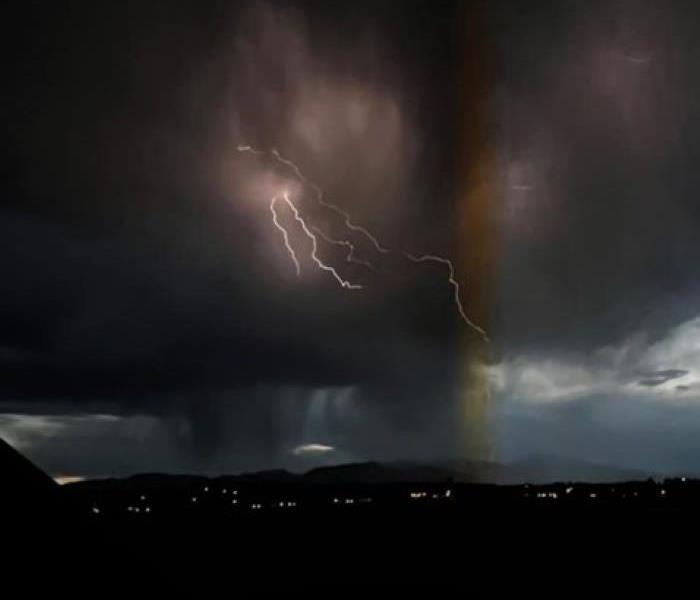 During storms keep your eyes to the sky. Call SERVPRO of Greeley/Windsor, 970-353-1388 if you experience storm damage.
During storms keep your eyes to the sky. Call SERVPRO of Greeley/Windsor, 970-353-1388 if you experience storm damage.
Summertime brings thunderstorms in Colorado. Thunderstorms are defined as storms that produce thunder and lightning. Severe thunderstorms may also produce:
- Rain
- High winds
- Sleet or snow
It’s important to note that thunderstorms do not always produce moisture. A storm in which you see lightning and hear thunder but never feel a drop of water is known as a “dry” thunderstorm. Thunderstorms that produce hail and tornadoes are known as “supercell” storms. Storms occur either in clusters or lines; therefore, they may present as a single thunderstorm or as multiple thunderstorms hitting one after the other.
Thunderstorm causes
Thunderstorms are caused when moisture from the lower or mid-level part of the atmosphere mixes with warm, unstable air from the ground. Moisture and air then push upwards into the higher atmosphere to form clouds that produce thunder and lightning, as well as potential precipitation. Spring, summer and fall are most conducive to thunderstorms because the sun heats the ground and moisture is more perceptible in the air, especially in humid climates.
Thunderstorms must also be lifted to begin their formation. Some sources of lift include:
- More heat on the ground than in the air
- Changes in atmospheric conditions near mountains
- Weather front changes caused by clashing cold and hot air
- Drylines, or when moist and dry air clash
- Land or sea breezes
Any of these situations can immediately create a thunderstorm without warning, even in the middle of a clear blue day. In many cases, these storms will also be accompanied by lightning. Most will not come with hail or tornadoes but can if they occur in tornado-prone states i.e., Kansas, Oklahoma, Texas and Missouri.
Our SERVPRO Professionals are highly trained in property restoration. From initial and ongoing training at SERVPRO's Corporate Training Facility to regular IICRC industry certifications, our Professionals are equipped with the knowledge to restore your property. The SERVPRO training program includes, but not limited to, the following:
- IICRC Training
- Employee Certification Training
- Initial Franchise Training
- e-Learnings
- Continuing Education Classes
For your storm damage needs call SERVPRO of Greeley/Windsor, 970-353-1388
Do I Have Asbestos in My Home or Office Building?
6/16/2022 (Permalink)
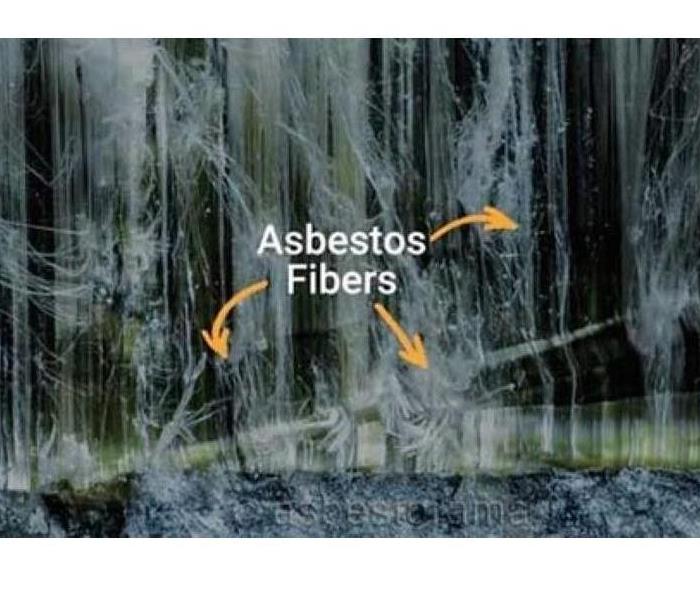 Before removing building materials within your home or business, contact an environmental hygienist to take samples and test for asbestos.
Before removing building materials within your home or business, contact an environmental hygienist to take samples and test for asbestos.
Asbestos is fibrous crystals of silicate that are used in attic and wall insulation due to its strength and ability to resist heat. When construction products made with asbestos, a mineral composed of thin heat-resistant fibers, are damaged, those fibers become airborne. Asbestos fibers pose a danger to anyone who inhales them. Asbestos is highly regulated in the U.S., but not banned.
Asbestos may be found in various building materials used in your home or office building, such as paint, insulation, and flooring. Homes and public structures, such as schools, government housing and office buildings built before the 1980s may contain asbestos in:
- Roof Shingles
- Ceiling and Floor Tiles (i.e., popcorn ceilings)
- Textured Paint
- Spray-on Insulation
Why is it dangerous? Asbestos is dangerous because the long fibrous crystals that it is comprised of can break down into microscopically thin fibers. If disturbed, these fibers are so small they can remain airborne for days. While airborne, individuals can breathe these fibers in. Since the fibers are so small, they can travel deep into a person’s lungs, where they may eventually lodge in the lung tissue. Once there, these fibers can cause serious medical issues including asbestosis. For this reason, it is important to identify and remove asbestos in your home or workspace.
The best way to avoid asbestos exposure is to hire a trained asbestos professional to come onsite and collect samples and have them tested. Upon receipt of the results if your building comes back “hot” for asbestos you should contact an asbestos abatement company to remove the materials that tested “hot.” Hiring an asbestos abatement company to remove asbestos from residential and commercial buildings is the safest strategy to keep yourself and others safe.
Had A Water Loss? Leave The Drying Equipment On!
6/16/2022 (Permalink)
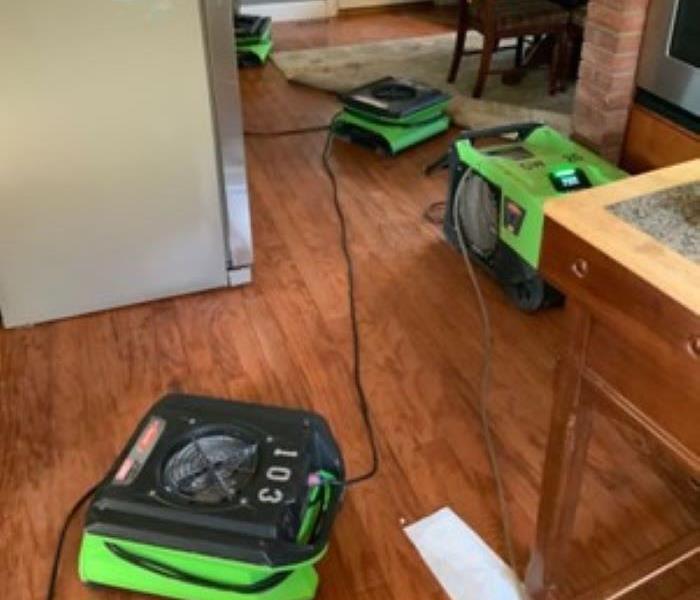 We understand that the drying equipment can be noisy and annoying, but please leave it on! We promise it does help dry your structure.
We understand that the drying equipment can be noisy and annoying, but please leave it on! We promise it does help dry your structure.
We understand that the drying equipment can be noisy and annoying, but please leave it on! We promise it helps!
When you call SERVPRO of Greeley/Windsor to help restore your property after suffering a water damage, our professional technicians will place the appropriate equipment to dry out the area as quickly as possible. It is important to always following our instructions and keep the equipment running, do not shut it off. We realize that the equipment is noisy and can become bothersome if you remain in your home during the restoration process, however, turning off the air movers and/or dehumidifiers can delay the drying time and can cause further damage to your property such as mold growth.
It is also important to note that oftentimes your insurance coverage will only pay for the drying equipment for a specific length of time, depending on the category of damage. Our certified technicians at SERVPRO of Greeley/Windsor will monitor the moisture readings of the equipment daily to determine the appropriate time for removal. If you have any concerns or questions about the drying equipment, be sure to speak to our Crew Chief onsite.
Our SERVPRO Professionals are highly trained in property restoration. From initial and ongoing training at SERVPRO's Corporate Training Facility to regular IICRC industry certifications, our Professionals are equipped with the knowledge to restore your property. The SERVPRO training program includes, but not limited to, the following:
- IICRC Training
- Employee Certification Training
- Initial Franchise Training
- e-Learnings
- Continuing Education Classes
Spring Floods
5/9/2022 (Permalink)
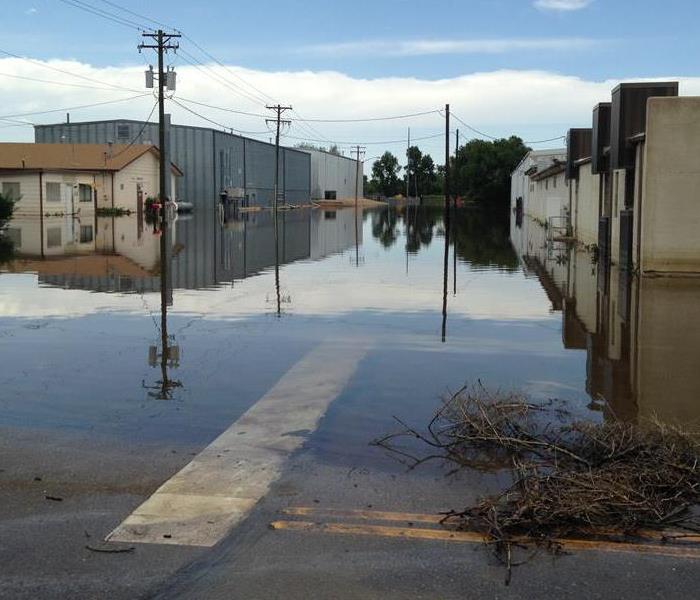 SERVPRO of Greeley/Windsor is ready to assist 24/7/365 with emergency mitigation.
SERVPRO of Greeley/Windsor is ready to assist 24/7/365 with emergency mitigation.
SERVPRO of Greeley/Winsor is available 24/7/365 for storm, fire, and water emergencies, large or small. When you are dealing with damage to your home, immediate action is crucial. If it is flooding or burst pipe, a delay of just a few hours can greatly increase the severity of the water damage.
We are Here to Help
We understand that when you call us, you may be feeling confused, stressed, and vulnerable. You need an expert to guide you through this crisis. SERVPRO of Greeley/Windsor has the specific water damage training and experience to help you through this tough time. We specialize in water and storm damage restoration - in fact, it's the cornerstone of our business.
What to expect
When you call, we will ask several questions regarding your emergency. These questions will help us determine what equipment and resources to bring, including how many trained SERVPRO technicians may be needed.
Our SERVPRO Representative will ask several questions, which includes:
- Your name and contact information
- Your insurance information (if applicable)
- The address of the water-damaged home or business
- When did the flooding or water damage occur?
- What is the source of the water damage (if known)?
- Is there electricity available (on-site)?
Our SERVPRO Professionals are highly trained in property restoration. From initial and ongoing training at SERVPRO's Corporate Training Facility to regular IICRC industry certifications, our Professionals are equipped with the knowledge to restore your property. The SERVPRO training program includes, but not limited to, the following:
- IICRC Training
- Employee Certification Training
- Initial Franchise Training
- e-Learnings
- Continuing Education Classes
We are ready to help, so call us, 970-353-1388, today if you experience damage to your home or business.
Choosing The Right Smoke Detector for Your Home
4/26/2022 (Permalink)
 Do your research when choosing the right smoke detector for your home or business.
Do your research when choosing the right smoke detector for your home or business.
Take The Following Considerations When Purchasing a Smoke Detector
We hope everyone knows the importance of smoke alarms. A working smoke detector increases the odds of you and your family escaping your, home during a fire. Alarms can also notify you of a small flame on the other side of your house. This may allow you to extinguish the blaze before it causes extensive harm that necessitates fire cleanup and restoration services.
However, choosing the right smoke alarm can sometimes be a challenge. You need reliable detectors that also fit your family's specific needs. Below are some factors to consider when picking your alarms.
- Type
There are two main types of smoke detectors.
- Ionization alarms detect quick-moving fires, such as those caused by paper or grease.
- Photoelectric alarms, meanwhile, are best at detecting slow fires from clothes or electricity.
Ideally, you should purchase both photoelectric and ionization alarms for your house. Since ionization detectors are more sensitive, you may want to keep them away from the kitchen. Otherwise, they could get triggered by smoke from cooking.
You can also install a system that connects all the detectors. This way, if one smoke alarm goes off, all of them will beep.
- Convenience
With your busy lifestyle, you do not want to spend excess time working on a smoke detector. Choose a model that is easy to maintain. If you opt for a battery-powered detector, pick one with drawers that make it easy to change the batteries. You may also want to find an alarm with a removable cover that simplifies the cleaning process. - Certification
Finally, pick a detector that has been testified and certified by a respected agency. Alarms that have an "FM " or "UL" label must meet certain standards.
You should take all the above considerations into account when picking each smoke alarm for your home. By choosing the right detectors and following basic fire safety rules, you can protect both your house and your loved ones.
If you do experience fire damage, call the professionals at SERVPRO of Greeley/Windsor, 970-353-1388. Our technicians and ready to respond to calls 24/7/365.
Preparing for Spring Storms in Colorado
2/28/2022 (Permalink)
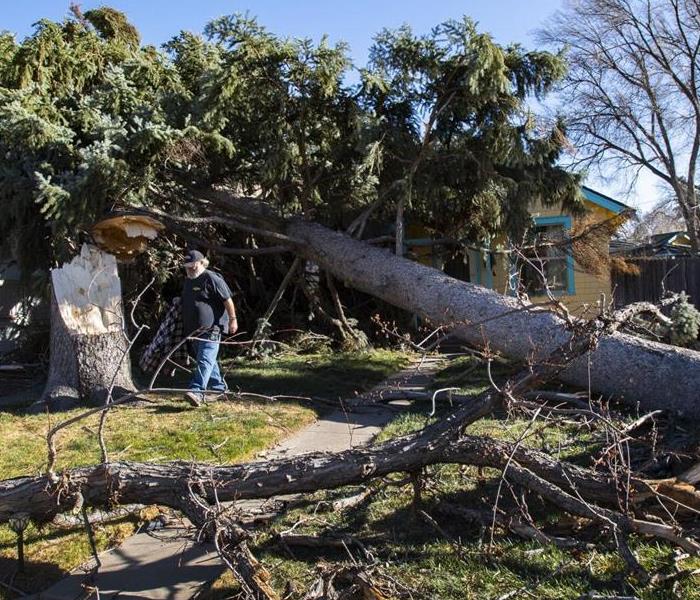 Be prepared for the unexpected during Colorado Spring storms
Be prepared for the unexpected during Colorado Spring storms
Being prepared for severe weather can help minimize damage to your home and property.
Knowing your risk is important. Understanding what types of weather affect your area is important; do you live where, tornadoes, lightning, thunder, and flash floods all present different issues for homeowners? As we all know in Colorado severe weather can happen any time of the year, but our risk for storms is even greater in the spring. Ways to be prepared; you can sign up for the Emergency Alert System (EAS) or you can purchase a NOAA (National Oceanic and Atmospheric Weather Alert Radio.
Create a plan for your family so you know what and where to go during severe weather. Identify a safe sturdy shelter for your family. Prepare your home in advance for severe weather by cutting down limbs that might fall on your home. Consider buying surge protectors, lightning rods or a lightning system to protect your home, appliances, and electronic devices.
Be prepared for the unexpected!
Our SERVPRO Professionals are highly trained in property restoration. From initial and ongoing training at SERVPRO's Corporate Training Facility to regular IICRC industry certifications, our Professionals are equipped with the knowledge to restore your property. The SERVPRO training program includes, but not limited to, the following:
- IICRC Training
- Employee Certification Training
- Initial Franchise Training
- e-Learnings
- Continuing Education Classes
If you experience storm damage call SERVPRO of Greeley/Windsor, 970-353-1388
SERVPRO of Greeley/Windsor Your Local Resource for Water Mitigation
2/21/2022 (Permalink)
Do you know how quickly water damage can spread through your home and begin to damage your valuable personal property, furniture, and family heirlooms?
The answer is faster than you think.
Within just a few minutes, water contamination can begin to spread throughout your home. It will start soaking into wood and furniture, causing it to warp and making upholstered pieces begin to fade or stain. Additionally, it can begin to impact personal papers and photographs just as quickly.
It barely takes a day to notice wood warping and wet drywall. Mold can start to grow just as quickly, with a musty odor becoming noticeable, in some cases, within a few hours.
Water damage from storms, leaks and burst pipes is a common problem for homeowners. But knowing how quickly it can spread or worsen means that you know it’s time to get professionals onsite as soon as you notice it.
Your 24/7/365 Restoration Team
If you have an emergency, you can count on us. We know how important it is for you to move fast if your home starts to show signs of water damage.
Our technicians are highly trained and IICRC certified experts. You can trust that the team you work with will know how to restore your home best.
If your home is damaged due to fire or water, call the professionals at SERVPRO of Greeley/Windsor. We have teams who are available 24/7/365 and we answer our phones which puts our technicians onsite faster. Call SERVPRO of Greeley/Windsor at 970-353-1388.



 24/7 Emergency Service
24/7 Emergency Service









